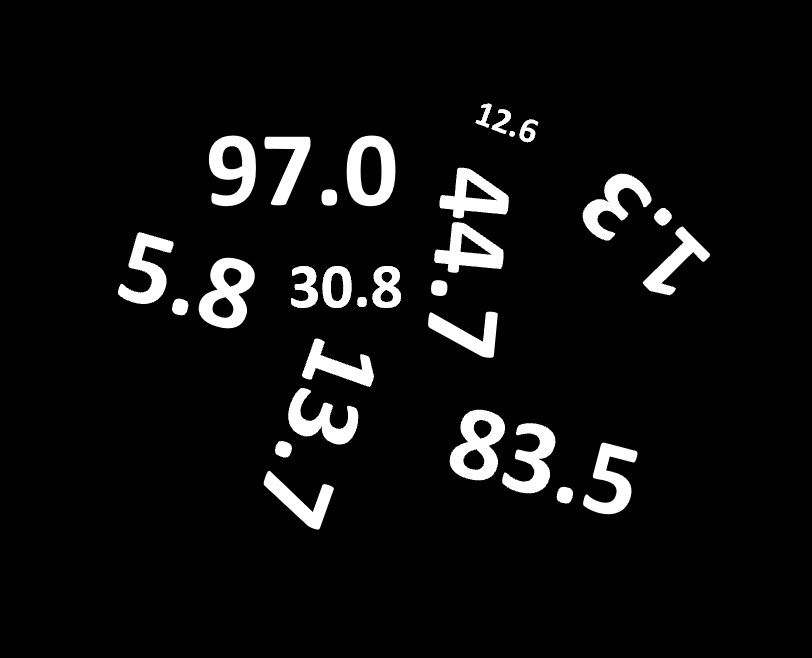GOOD MORNING,
Inter-market spread activity continues. Buy soyoil/sell meal and unwinding of recent buy wheat/sell corn are in play.
Soyoil futures continue firmer against meal. Firmer world cash values and a sharply higher palm oil market support soyoil.
Corn heads lower against a firmer wheat market, though that spread has flipped this morning. Pricing in corn and some bargain hunters are supporting corn futures this morning. Traders continue to look to see if China will purchase corn as they are almost sold out of their state reserves, according to the National Grain Trade Centre. In the meantime, ideal weather and weaker technical price action finds corn new contract lows.
Beans head lower as the $36.5 bln target set for the Phase One deal may be slipping away. By end of May, imports were running behind the 2017 level rather than 50% ahead as needed to attain it.
On the political front, the Argentine government is considering reintroducing differential export duties for bean productions, (instead of a single flat duty for the entire complex), as a way to shore up reserves by encouraging idle crush capacity to return online. Argentina's farmers have returned to hoarding beans as a hedge against inflation, and in an effort to defy export export taxes. Crush margins have bounced, as Argentine plants shut down due to instances of covid-19.
In another story, a cargo of beans from Brazil has been detained near a port in Northern China for the past 4 days. Up to 10 crew members on board the ship tested positive for Covid-19 and the crew may need to be changed out in the Philippines before retesting at the Chinese port and unloading.
WEATHER
Rains continue to hit the Midwest with non-threatening weather over the next several weeks. Temperatures will be normal to below normal. Weather is mostly favorable for pod setting to filling beans in the Midwest, with some dry spots in western Iowa continuing to see stress. A front will produce shower activity over the entire Midwest this week into next week. Weather is bearish.
REPORTS
Export Sales:
Beans: 19/20 net 257,800 mt and 20/21 net 3.34 mt (vs. an expected 19/20 net 300-500 and 20/21 net 1.4-2.0 mt)
Meal: 19/20 net 260,900 mt and 20/21 net 32,900 mt (vs. an expected 150-400 mt and 20/21 net 75-100 mt)
Soyoil: 19/20 net 800 mt and 20/21 net 10,00 mt (vs. an expected 5-30 mt)
Corn: 19/20 net -29,300 mt and 20/21 net 638,700 mt vs. an expected 600-1.5 mt)
Wheat: 19/20 net 676,600 mt (vs. an expected 250-650 mt)
Wheat: good sales, but cheaper offers are still out of Russia.
Corn: poor old sales but new moderate at best, with cheaper offers in SA and Ukraine.
Beans: old crop poor but new crop large accounting for 1,989 and unknown for 1.233
Meal: good sales with Philippines the majority
Oil: poor sales on rising premiums around the world.
Egg-sets and broilers placed were each 1% lower on a YOY basis.
ANNOUNCEMENTS
Brazil's Datagrao forecast 20/21 bean production at 131.69 mmt, which would be 6% higher than year ago. 20/21 planted areas is expected to rise by 2.5% vs. last season top 37.99 mln hectares.
Brazil's Datagro forecast 20/221 corn production at 112.1 mmt, which would be 8% higher than year ago.
CALLS
Calls are as follows:
beans: 1 1/2-2 lower
meal: 1.20-1.50 lower
soyoil: 15-20 higher
corn: steady
wheat: 2 1/2-3 lower
OUTSIDE MARKETS
Some unwinding of spreads as well, with slightly weaker gold prices at $1936/40/oz vs. a firmer US dollar at 93.31. Stocks are off 200 pts. as Covid spreads further throughout US states.
TECH TALK
- December corn posts trades into its lows at $3.26, with targets still at contract lows of $3.22/$3.25. The break of $3.30 opened the door for weaker trade and moved resistance down to $3.33. Can sell against $3.33-$3.35 on a bump higher.
- September wheat remains sideways with a push back into key support from $5.20-$5.23. Prices continue range-bound and confined between the 100-day moving average of $5.23 and the 200-day moving average of $5.35. For now, resistance seems stronger than support and any break of $5.18 turns prices lower.
- November bean charts weaken to $8.80 testing key support. The trend remains extremely weaker with an ADX reading of 14, meaning downside follow-through is lacking. If Nov. beans penetrate $8.80 look for prices to trend down to major support at $8.68-$8.71 where a short should be covered.
- December meal prices work lower but remain a consistent $290.00-$308.00 trading range. Would look for buy soyoil/sell meal trade to push meal into key support at $292.00.
- Dec. soyoil bounces off key support at 2960c and trades back over 30c. The pattern has been to challenge prev. highs on recovery trade, and would look for any trade past 3050c to do so.
DECEMBER SOYOIL
The major direction is higher, with prices in consolidation mode from 2950c-31c double tops. The market bounced off key support at 2960c which is what stronger markets do and is now directionally headed to test the 200-day moving average at 3050c. The ADX trend higher, though not particularly strong, has been strengthening which suggests that pullback should be purchased. Think that prices are going to remain well bid on a pullback towards 30c now for another challenge of 31c. Look for the likely chance that prices target 3050c, with a trade back towards 31c. Should that happen it may return strength back to beans which is at the lower end of its range.
TAGS – Feed Grains, Soy & Oilseeds, Wheat, North America

 Large supplies and a strong dollar took their toll this week on corn and soybeans, but they still managed to outperform. Weather worries pushed wheat higher for a seventh straight session, and pork finally took a fall. There was high volume trading in corn today but without any strong fee...
Large supplies and a strong dollar took their toll this week on corn and soybeans, but they still managed to outperform. Weather worries pushed wheat higher for a seventh straight session, and pork finally took a fall. There was high volume trading in corn today but without any strong fee...
 The Market Brazil has been winning the soybean export war, and imported biodiesel feedstock threatens domestic crush margins, but Chicago trading this week appeared to shake off such concerns. July soybeans traded lower for the past three trading sessions but larger gains achieved at the beginn...
The Market Brazil has been winning the soybean export war, and imported biodiesel feedstock threatens domestic crush margins, but Chicago trading this week appeared to shake off such concerns. July soybeans traded lower for the past three trading sessions but larger gains achieved at the beginn...
 The Q1 2024 GDP was 1.6 percent, well below the pre-report consensus expectation of 2.4 percent, and down from 3.1 percent in Q1 2023 and 3.4 percent in Q4 2023. That rate was the slowest in almost two years, dating back to Q2 2022. Recall that in the 2 February Ag Perspectives report on...
The Q1 2024 GDP was 1.6 percent, well below the pre-report consensus expectation of 2.4 percent, and down from 3.1 percent in Q1 2023 and 3.4 percent in Q4 2023. That rate was the slowest in almost two years, dating back to Q2 2022. Recall that in the 2 February Ag Perspectives report on...